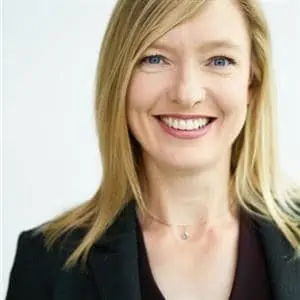R&A seeks more sustainable solutions for golf of the future
Arlette Anderson is the R& A’s director of sustainable golf. She took up the post at the R&A in 2021 after 25 years working in sustainability across a range of industries, including as EHS director at Gatwick Airport. We met Arlette Anderson at the biodiversity event in Germany at St. Leon-Rot Golf Club and spoke with her about her and the R&A’s understanding of sustainability in golf.
Where has golf made the most progress in sustainability over the past five years?
Anderson: I would say my first observation is that there is increasing collaboration in terms of understanding sustainability and sharing best practices. I think golf is now catching up fast on its journey to sustainability.
What surprised you the most when you came into the golf industry?
Anderson: What surprises me the most is the opportunities that golf offers. But perhaps golf hasn’t realized how great this opportunity is.
Are the huge areas of golf courses the reason for these possibilities?
Anderson: Yes, golf is played in a wide-open space and provides a great opportunity for climate change adaptation.
What was your most negative impression?
Anderson: I think that’s the pace of change in sustainability. This is another opportunity: to bring about change.
The R&A has been pushing the issue of sustainability very hard in recent years. What issues will the R&A focus on in the coming years?
Anderson: We have identified the most important issues in terms of sustainability and golf. It is important to first understand and then support and lead collaboration across the industry. The impact of climate change on golf is the main topic. That means climate change, supply chain issues and health regulations. The next question now is what golf clubs can do to adapt to climate change.
Another issue is resource efficiency and scarcity, for example in the use of water or sand. We need to look for solutions that are more sustainable in the future. Another issue is the impact of legislation. We operate internationally and therefore have to consider how clubs, federations and associations can adapt to the increasing regulations of the United Nations or the EU.
The diversity of the Gulf countries is very large. Which countries are ahead on their path to sustainability?
Anderson: We as the R&A don’t want to single out individual countries. Our role is more that of a supporter, and we try to find the best, individual way for each country.
Do you think the golf industry has realized how urgent the issue is?
Anderson: Other industries have different priorities when it comes to adopting more sustainability. This can be shareholder value or a market position. What I’m watching in this sector is the economic viability of golf facilities in the future. In my opinion, sustainable positive change needs to focus more on this area. Things like the use of energy or sand become an economic argument. This is one reason for adopting more sustainable practices.
Mobility is the weak point of golf. Do you see a solution?
Anderson: That’s a real problem. We need to find a practical solution. We need to encourage people to realize the impact they can have. And we need to encourage clubs to install electric charging stations because that is expected by members and is a source of revenue for clubs. Using public transportation with all the equipment in golf is almost impossible. We will come to a point where we need to think about credible compensation. You have to be realistic.
Let’s talk about mobility at the Open, for example the shuttle service for the players: usually there is only one player in a car.
Anderson: Yes, that’s a missed opportunity. But we need to engage, educate and get the message out. There is no question that we will have to come up with some ways to solve, for example, the arrival of spectators and players. We measure the CO₂ emission of the Open. Knowing the scale of CO2 emissions is a starting point, and then we need to develop ideas about what we can do.
Finally, let’s talk about the problem of greenwashing in golf. More and more companies are announcing plans for sustainable projects together with the GEO Foundation, which also receives financial support from the R&A. How can you control the result?
Anderson: GEO is a credible organization that strives for accuracy and provides assistance, guidance and technical support to clubs and organizations. But I think it’s about how to measure the positive change that clubs and organizations can make. One of my goals is to really measure and see the change in sustainability projects in the golf industry. My mission is to improve sustainable practices across the sector. So I will have to get measured and look at the data. In terms of change, the R&A will support and engage and of course work with GEO, but also take a leadership position to see if change is happening and then communicate that to the industry and the clubs. This is about credibility.








